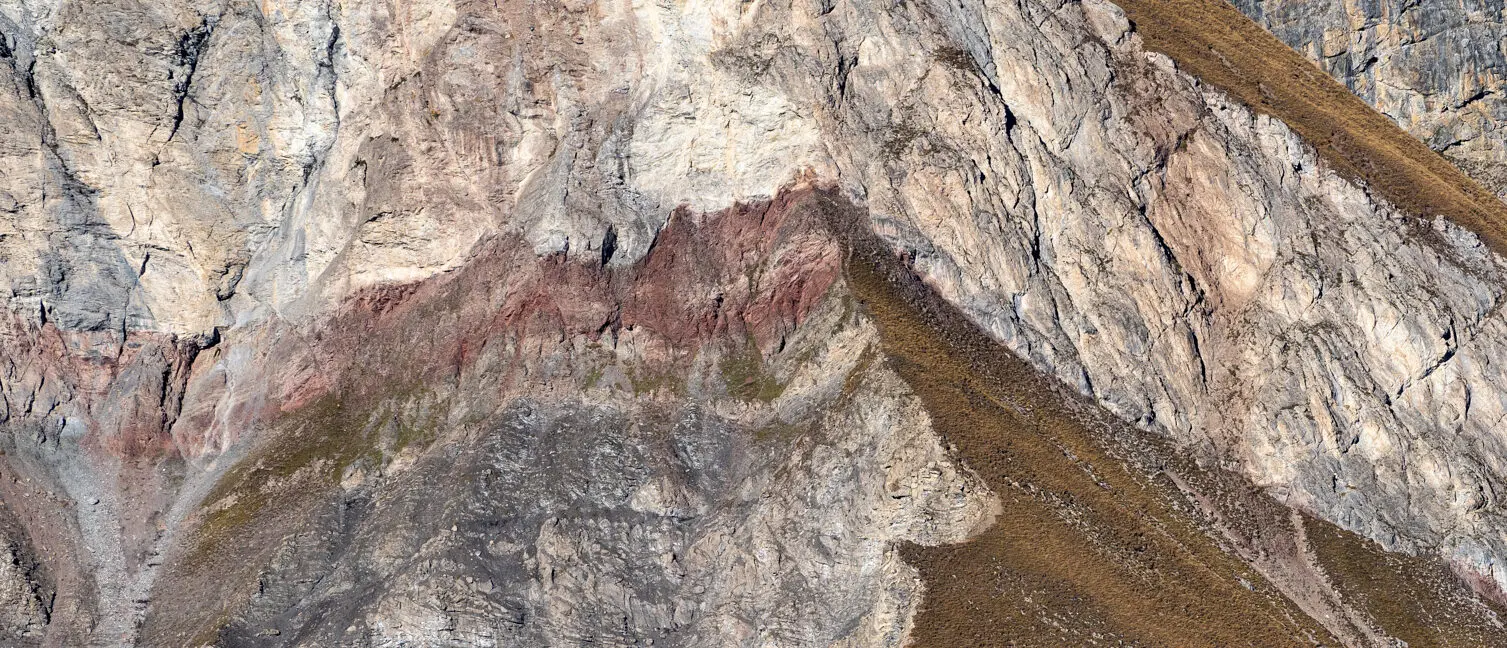Radiolarite is a special kind of rock. It came into being at around 5000 metres below sea level, on the sea floor, and is made of skeletons of radiolarians.
These microscopic little animals – protozoans – still live in cool oceans today. Their skeleton is not made of limestone, like most animals, but of silica or opal – which is chemically the same as glass.
When the radiolarians die, their glassy skeletons fall slowly to the seabed, building a muddy layer of radiolarians. Over time this radiolarian ooze has been consolidated into radiolarite rock.
At depths of 4500 metres and more shells made of limestone, which is sensitive to acid, are dissolved. Only the glassy skeletons of the radiolarians remain; in this way the presence of radiolarite tells us how deep the ocean must have been.
Radiolarite is hard, and so was often used during the Stone Age to make tools.
In the National Park it has a prominent place below Piz d’Esan, high above the Trupchun valley. One of the lateral valleys takes its name from the colour of this rock: Val Cotschna means ‘red’ valley.


